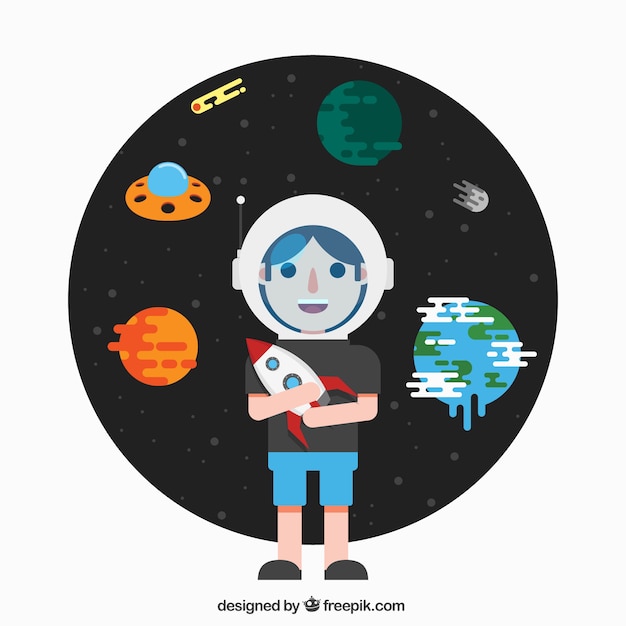Discovering Fascinating Facts about Neptune – Fun for Kids

Neptune is the eighth planet from the sun in our solar system.
It is named after the Roman god of the sea.
Neptune is a gas giant, made up mostly of gaseous hydrogen and helium.
The planet is bright blue in color, primarily because of the methane in its atmosphere.
Neptune has the strongest winds in the solar system, with speeds reaching up to 2,100 kilometers per hour.
It takes Neptune about 165 Earth years to complete one orbit around the sun.
The gravity on Neptune is 17% stronger than Earth’s gravity, which means you would weigh less there.
The Great Dark Spot on Neptune is similar to Jupiter’s Great Red Spot and is a huge storm that was once visible from Earth.
Neptune has 14 moons, the largest of which is Triton.
Triton is the coldest known object in our solar system, with temperatures as low as -235 degrees Celsius.
Triton is also unique because it orbits Neptune in the opposite direction to the planet’s rotation.
Neptune’s rings are made up of ice particles, dust, and small rocks.
The five main rings of Neptune are named Galle, Le Verrier, Lassell, Arago, and Adams.
Every 248 years, Pluto’s elliptical orbit brings it closer to the sun than Neptune, making Neptune the furthest planet from the sun during that time.
Neptune has a faint system of faint rings that are difficult to see from Earth.
The Voyager 2 spacecraft is the only spacecraft to have visited Neptune, passing by in 1989.
Discovering Fascinating Facts about Neptune – Fun for Kids part 2
The planet can be seen with a telescope from Earth, but it appears as a small, blurry dot due to its distance.
Neptune’s atmosphere is mainly composed of hydrogen, helium, and methane, which gives it its blue color.
The blue color of Neptune’s atmosphere is so striking that it can sometimes be mistaken for a water planet.
Neptune has a thin layer of clouds made of methane above its atmosphere.
Neptune’s average temperature is about -200 degrees Celsius, making it one of the coldest planets in the solar system.
In the mythology of the ancient Romans, Neptune was the god of the sea and brother of Jupiter and Pluto.
Neptune’s diameter is about four times that of Earth.
The deep blue color of Neptune’s atmosphere is a result of the absorption of red light by methane gas.
Neptune has a stronger magnetic field than any other planet in the solar system.
If you could stand on Neptune, you would weigh less than 10% of what you weigh on Earth.
Unlike Earth days, a day on Neptune lasts only 16 hours and 6 minutes.
The winds on Neptune are so strong that they can create massive storms that last for several years.
If Neptune was hollow, it could fit nearly 60 Earths inside it.
The first recorded sighting of Neptune was in 1846 by German astronomer Johann Galle.
The Voyager 2 spacecraft discovered six new moons of Neptune during its flyby.
The distance from the sun to Neptune is about 2.7 billion miles, or 4.3 billion kilometers.
Neptune has a thick layer of clouds made up of ammonia and hydrogen sulfide.
The gravitational pull on Neptune is about 17 times stronger than Earth’s gravitational pull.
The moons of Neptune are named after characters from Greek mythology.
Neptune’s largest moon, Triton, was discovered just 17 days after Neptune was first observed.
Neptune has a very faint ring system that was discovered in 1984.
The rings of Neptune are thought to be made up of small particles suspended in orbit around the planet.
Neptune’s moons are believed to be captured objects from the Kuiper Belt, a region beyond Neptune’s orbit.
Neptune has a mass about 17 times that of Earth.
The average distance between Neptune and the sun is about 2.8 billion miles, or 4.5 billion kilometers.
Neptune is not visible to the naked eye from Earth and can only be observed with a telescope.
The atmosphere on Neptune is so thick that it would crush a human being if they were able to stand on the planet’s surface.
Neptune’s atmosphere is constantly changing, as different storms and cloud formations come and go.
The blue color of Neptune’s atmosphere is caused by the absorption of red light by particles in the atmosphere.

